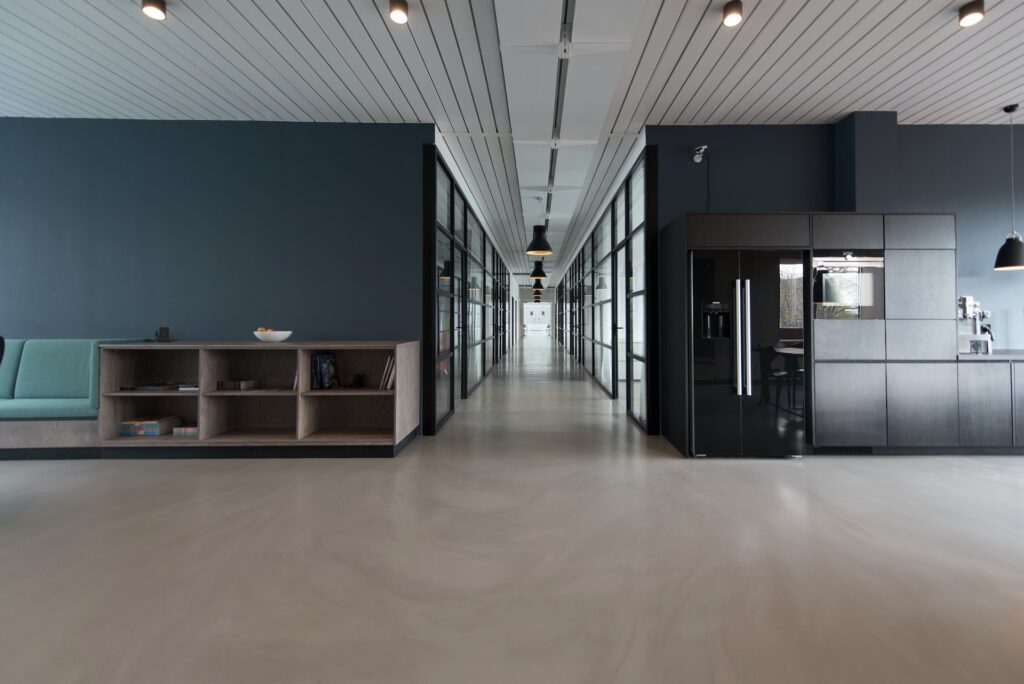To paint or not to paint? As interior painting contractors, we are often asked this question about various surfaces throughout the home. While we are all familiar with painted ceilings, trim, walls, and cabinetry, the processes of painting radiators or brick fireplaces are not as straightforward. Can you paint exposed pipes and expect the finish to last? What about a tile backsplash?
Regarding kitchen painting and remodeling, our clients often ask us, “Can you paint a tile backsplash?” In this blog, we’ll examine when it’s appropriate to paint a kitchen tile backsplash and when it might be better to replace it with something new.
So, Can You Paint A Tile Backsplash?
The answer is, “Yes, but…”.
Yes, you can paint a tile backsplash, but whether or not it’s the best option for you will depend on several factors.
When Does It Make Sense To Paint A Tile Backsplash?
Why would a homeowner choose to paint a tile backsplash instead of replacing it?
Cost: Kitchen remodeling is expensive! If a homeowner wants a completely new presentation and color palette, painting the tile backsplash may be the most cost-effective way to accomplish this.
Quick, simple solution: Instead of removing the current backsplash tiling, sourcing new tiles, and hiring a contractor to perfect the damaged walls and install new tile, a simpler solution may be to clean, sand, prime, and paint the current tile backsplash.
Color choice: There is nearly an unlimited number of paint colors available, one to suit any decor, and certainly more than found in available tile.
Eco-friendly: At a time when most of us are looking to lower our carbon footprint, painting a tile backsplash is an excellent choice. A fresh look is achieved with less waste in the landfill.
And When Does It Not Make Sense To Paint a Tile Backsplash
Those with the resources and time will likely find removing and replacing the backsplash tiling is the better choice.
Style: When updating a kitchen, sourcing the latest in appliances, decor, cabinetry, and surfaces is part of the process. You’ll want freshly styled tiling that is likely better suited for the new kitchen’s design and color palette.
Durability: Backsplash tiles take a lot of abuse, particularly those located behind a cooktop or range. We recommend paints formulated specifically for durability, scrubability, and chip resistance and those most likely to produce an evenly coated surface.
Type of tile: The most common types of backsplash tiling are ceramic, porcelain, glass, and variations of acrylics. While all these tile materials can work with specialized paints, natural stone tiles do not. Marble, granite, travertine, and slate backsplash tiles are all porous stones, and paint may not adhere to them properly. Paints can also compromise the integrity and natural beauty of the stone tiling.
Each Situation is Unique!
DIYers, how-to specialists, and industry professionals can be found on every corner of the web and across TV networks, offering exponentially more exposure to trade processes than ever before. And with that comes a plethora of opinions. At Catchlight, we know each home and homeowner is unique. If you are thinking about painting a tile backsplash but are unsure if it’s the right solution for you, ask us! We’ll happily give you a straightforward answer based on our years of experience.
Every Catchlight project, whether interior house painting, exterior painting, or light carpentry, is masterfully completed by professionals skilled at their craft.
To learn more about our residential painting services, please contact us today.

